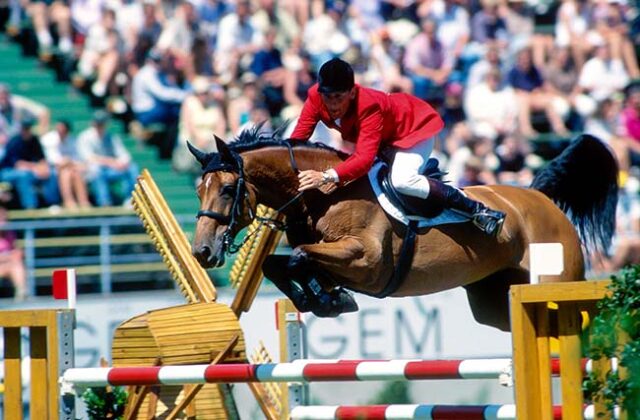By Christopher Hector
Photography: Hanoverian Verband and Peter Llewellyn
Having set out to identify the greatest showjumping broodmares of all time, I went to four acknowledged experts for their nominations: two Germans, Dr Ludwig Christmann and Dr Thomas Nissen; the Dutch expert, Egbert Schep; and France's Arnaud Evain. Little did I realise that I was starting on the sequel to my book, ‘The Making of the Modern Warmblood’ with a new book, entitled ‘The Transformation of the Modern Warmblood’...
This report is akin to a first draft, because the ‘article’ became so long that I’ve divided it into four, hopefully digestible, parts...
Dr. Ludwig Christmann
Dr Ludwig Christmann has been a friend and a valued colleague for many years. He was our group leader on my first Hanoverian Study Tour three decades ago. In his rôle with the Hanoverian Verband, Ludwig has been instrumental in the development of a worldwide network of Hanoverian breeders, but he is also the mover-and-shaker behind the Hanoverian Jumping program, an important initiative to stop the trend of breeders sending their good jumping mares to dressage sires looking for a better market. He is also a prolific writer, and puts together the Hanoverian Stallion Book every year.
Alsterröschen (1961)

Ludwig's first choice underlines the need to keep those old jumping lines alive – the mare is Alsterröschen (1961: Agram - Algave x Agram) – who is represented in the damline of Stakkato Gold. Agram is one of those names out of ancient history, but perhaps the most interesting aspect of this survey is that while the sport of showjumping has undergone massive changes in terms of the style and demands of the fences, and the showjumper of today looks very different from the old-fashioned Warmblood, when you compare the successful horses you still find those old lines flowing strongly.
Agram (1939) stood from 1942 until 1962. He was by Alkoven I (1917), a descendant of the foundation Thoroughbred, Adeptus xx (1880), and out of a mare by Amateur I (1922) who was a descendant of the Shagya Arab stallion, Amurath (1898), who stood at the Celle State Stud... To read the complete article you need to be a subscriber
CLICK HERE TO SUBSCRIBE TO BREEDING NEWS
SUBSCRIBERS CAN READ THE COMPLETE ARTICLE BY LOGGING IN AND RETURNING TO THIS PAGE




